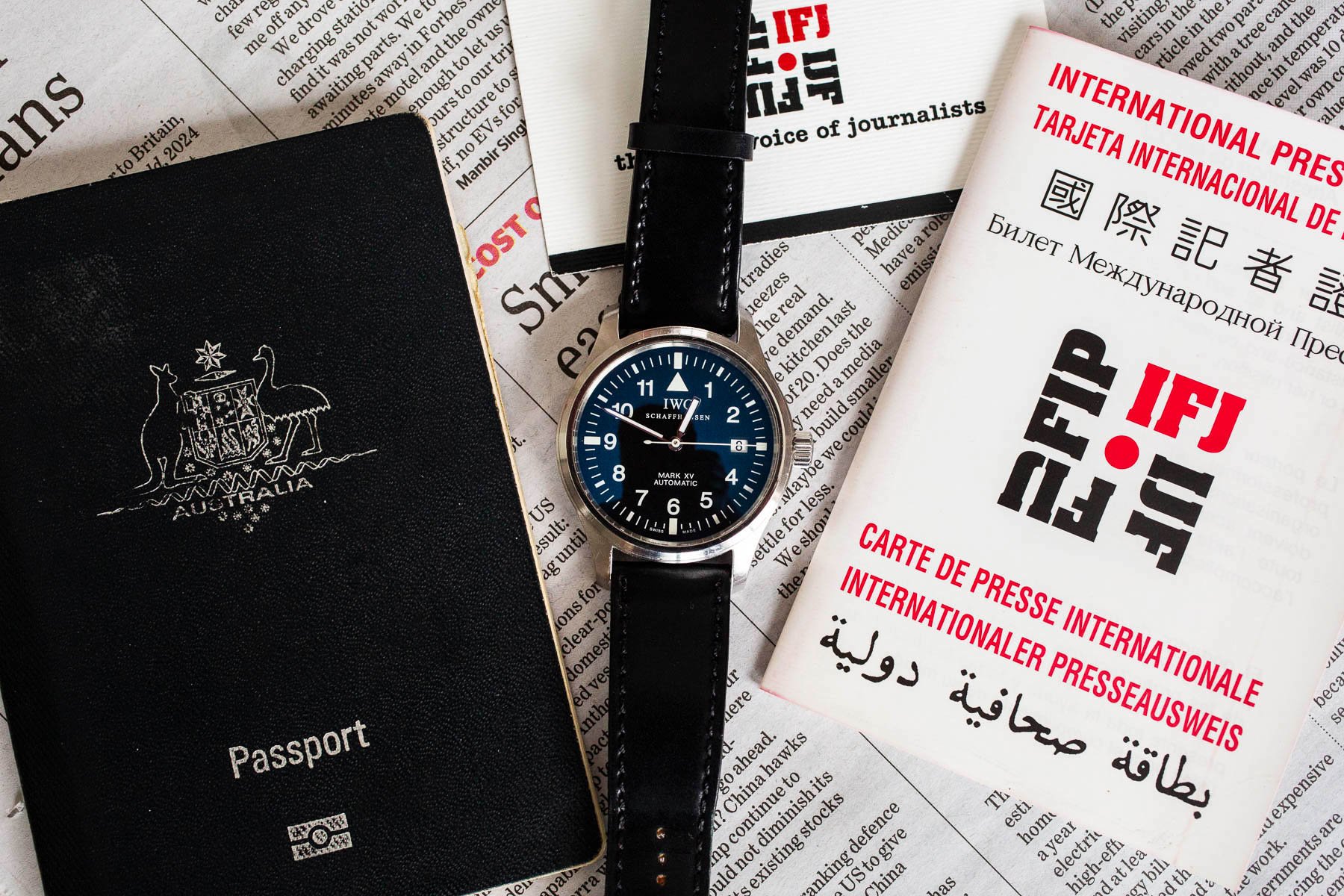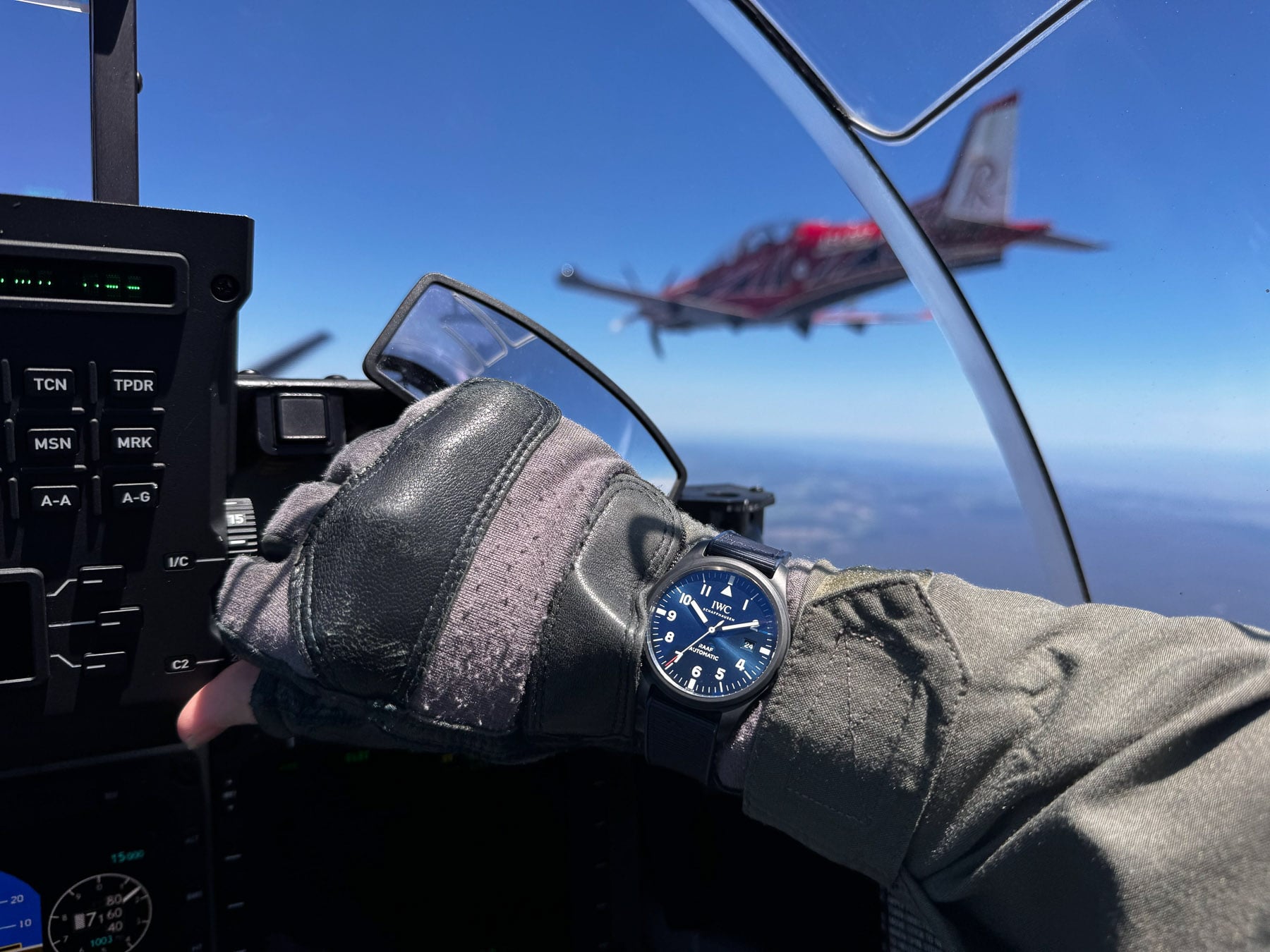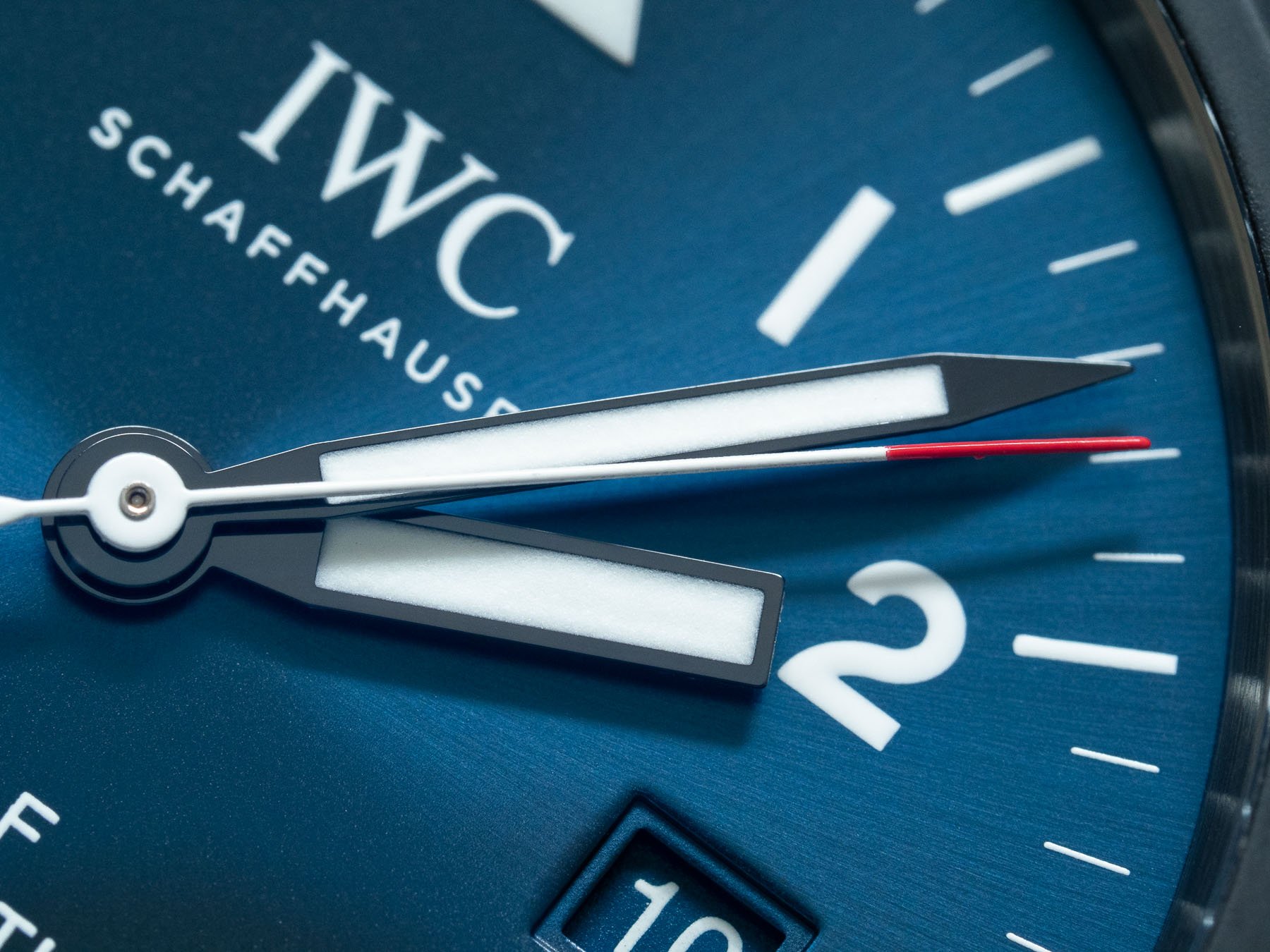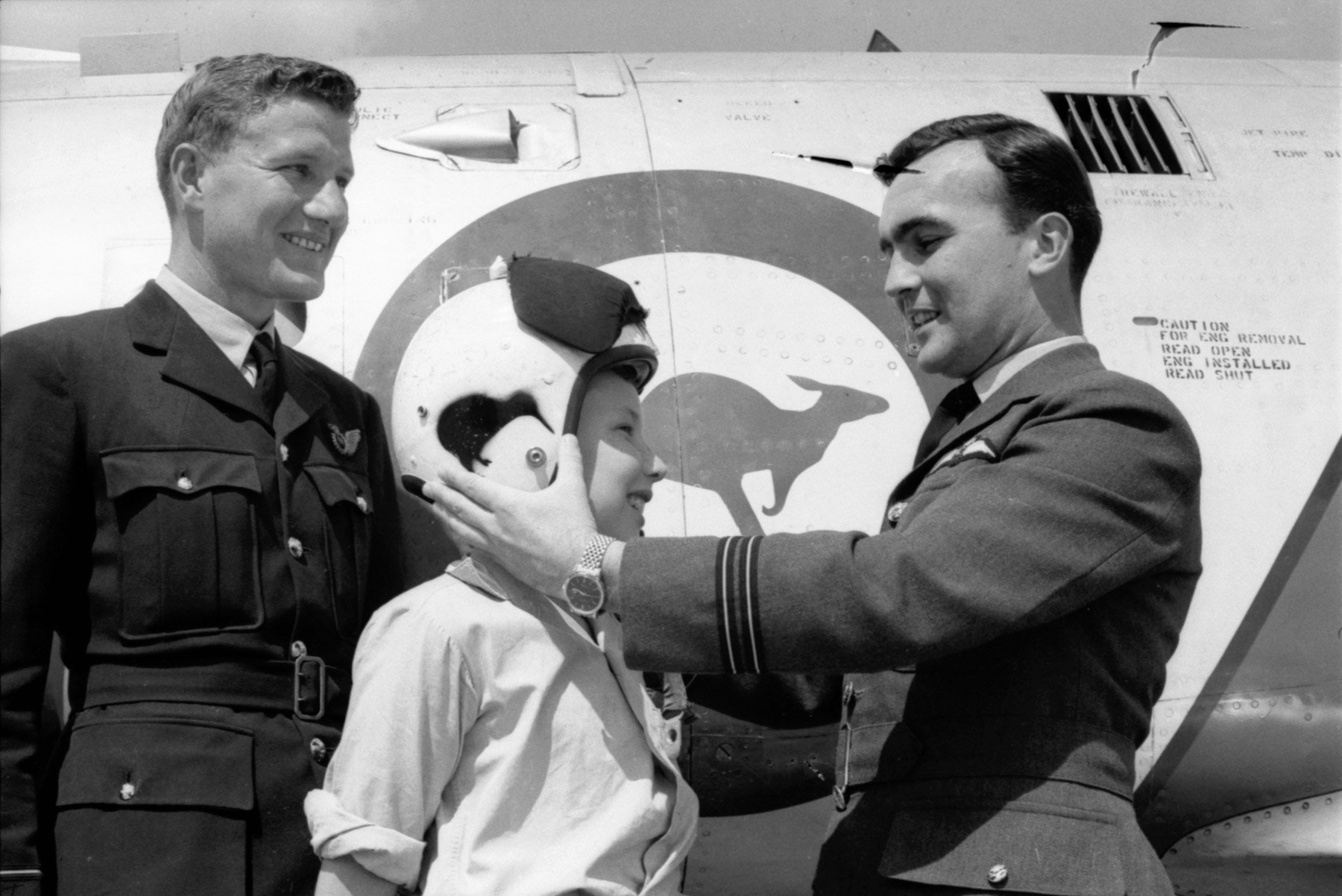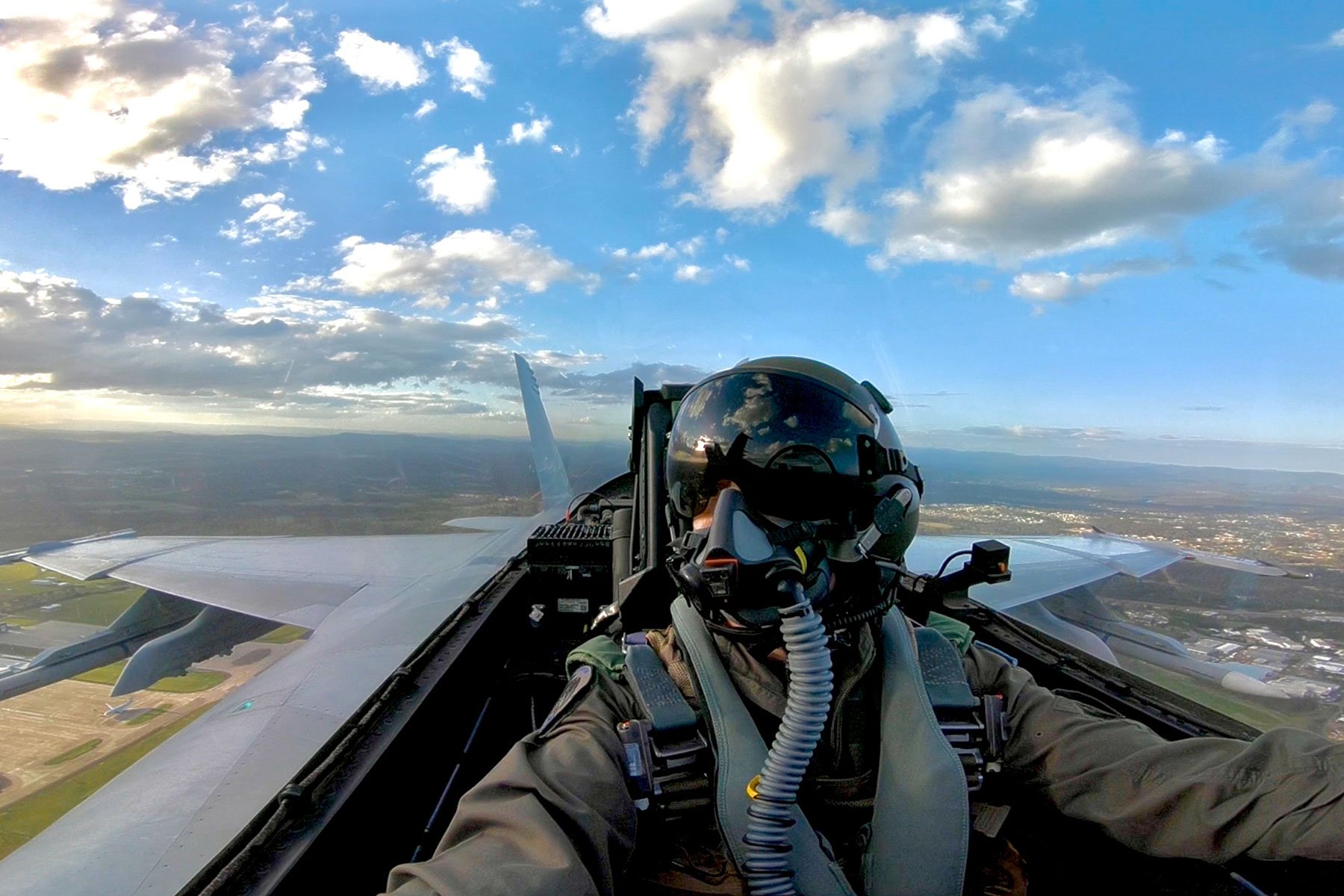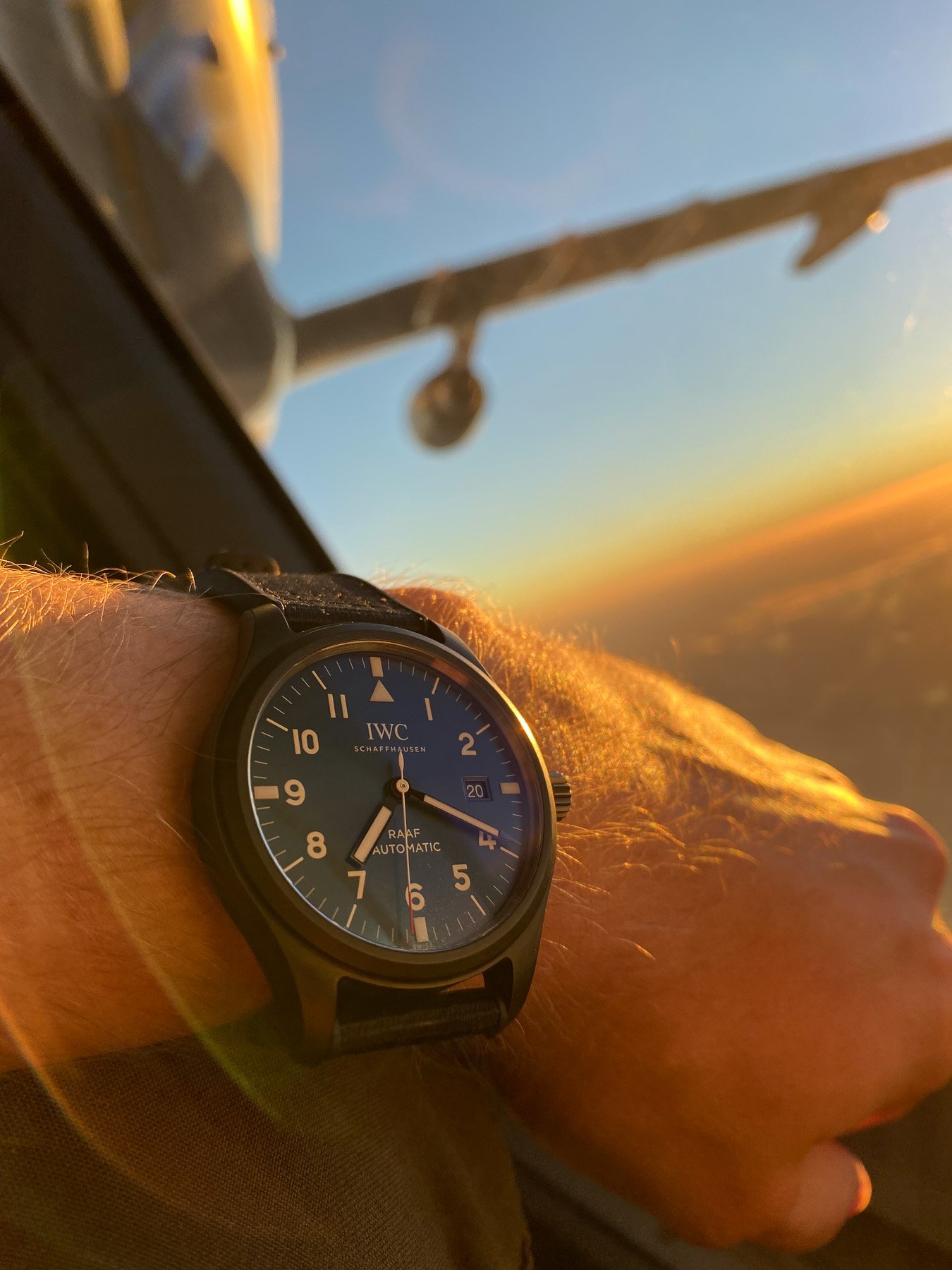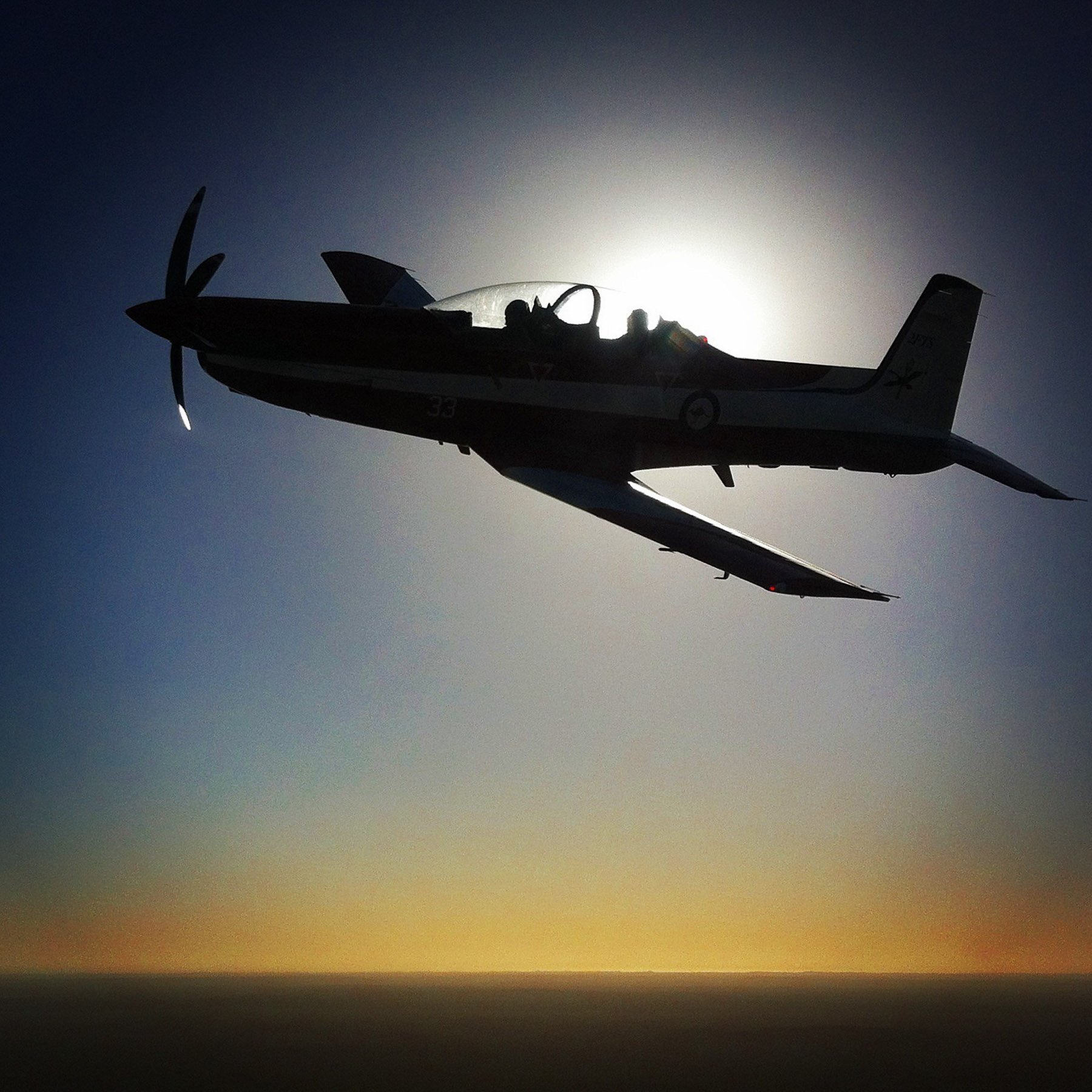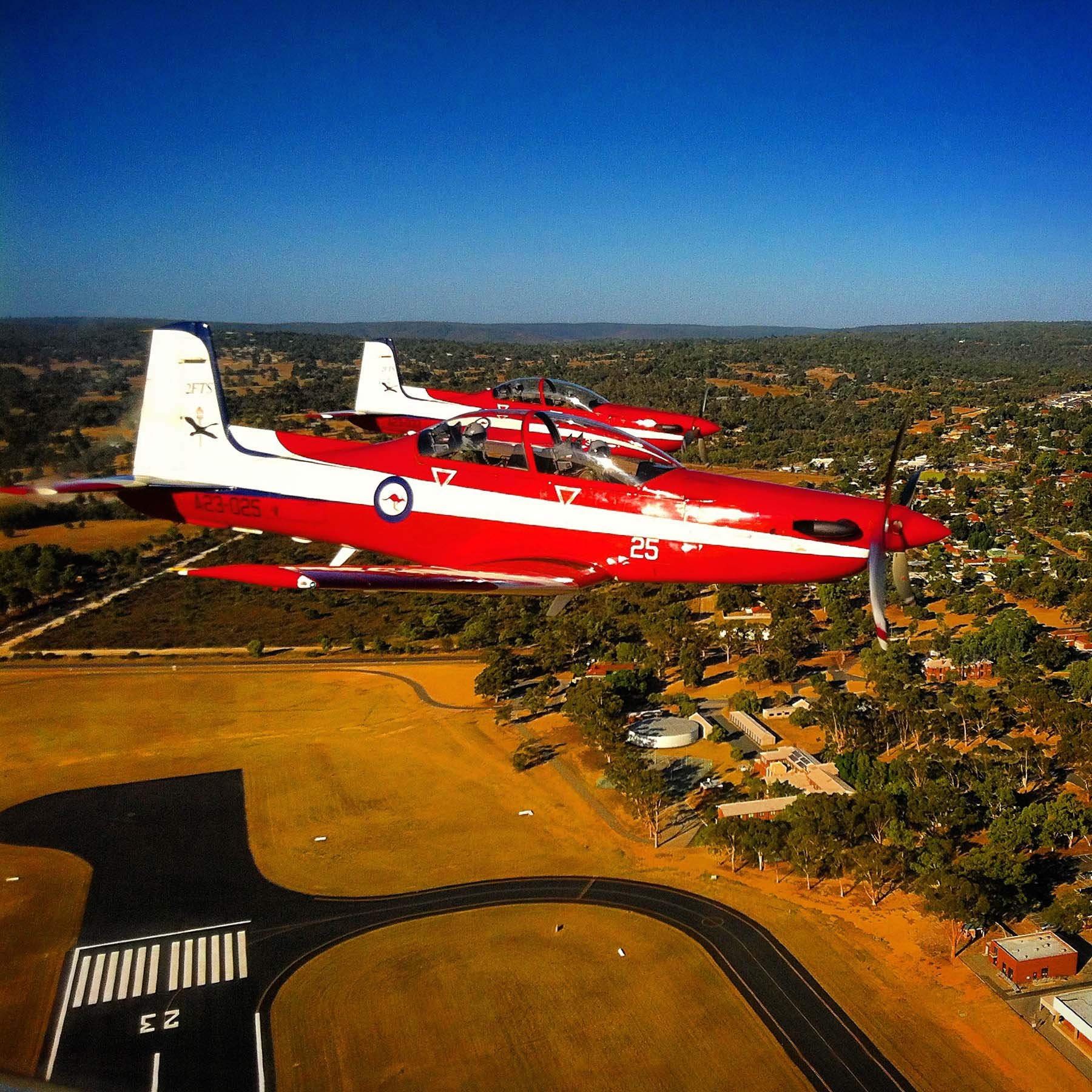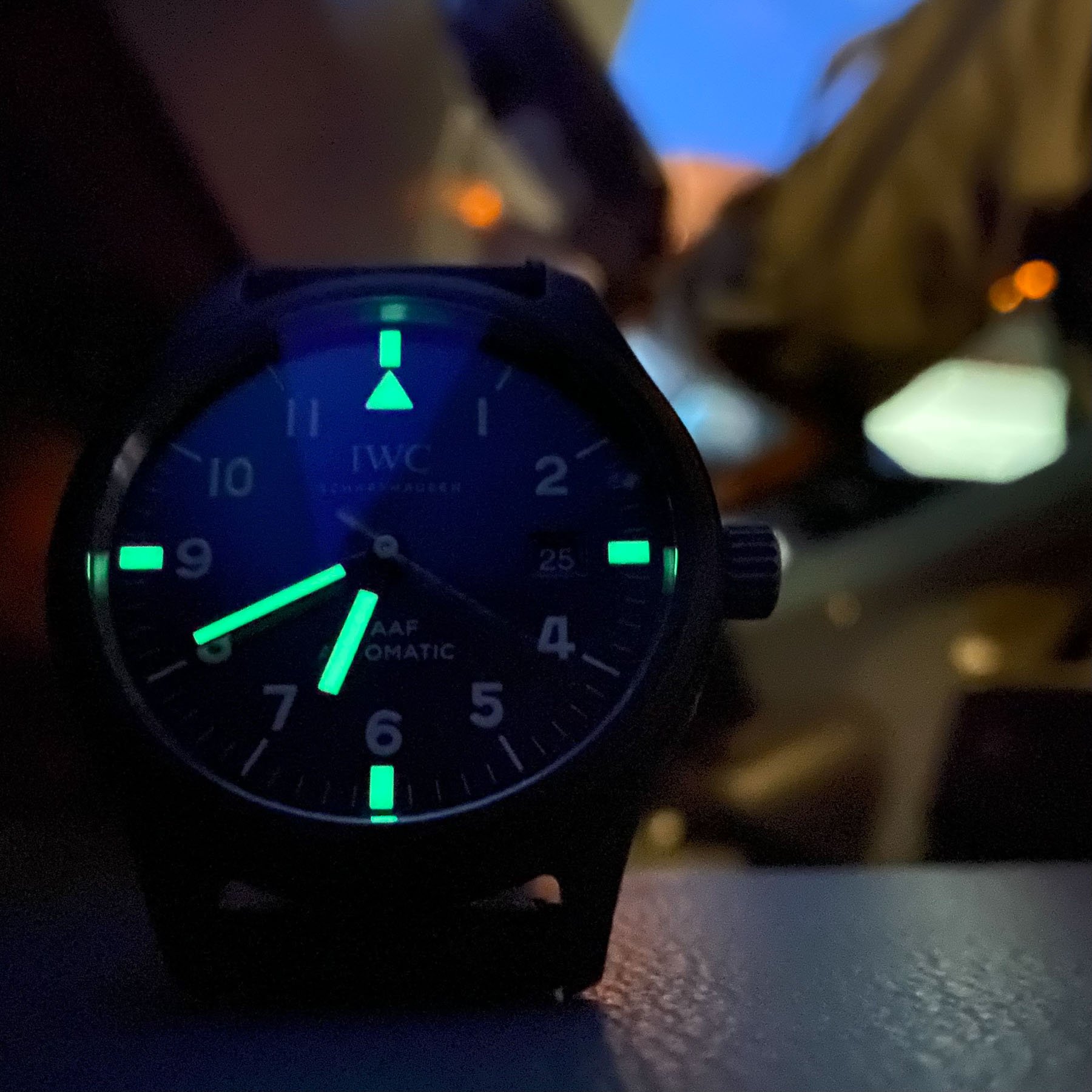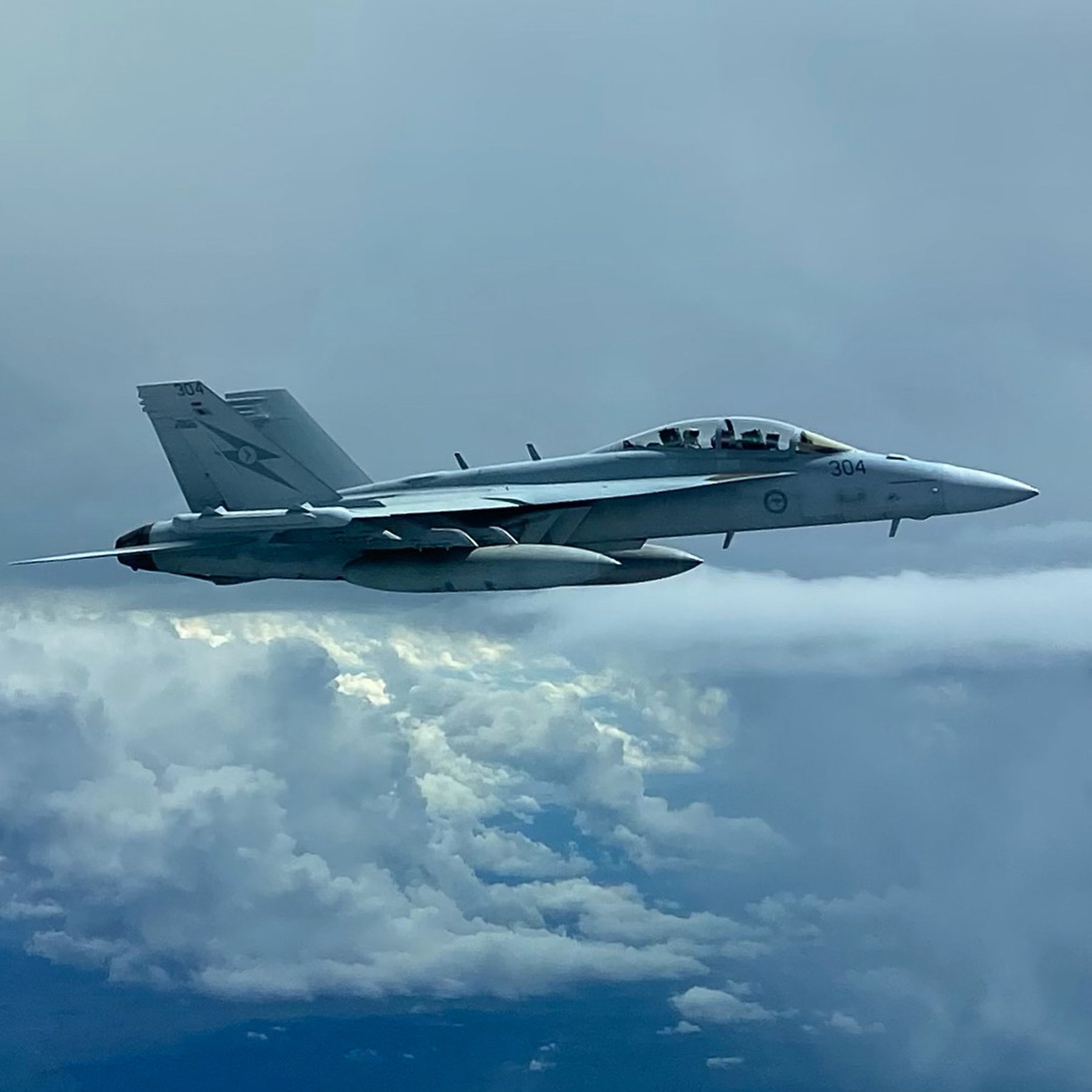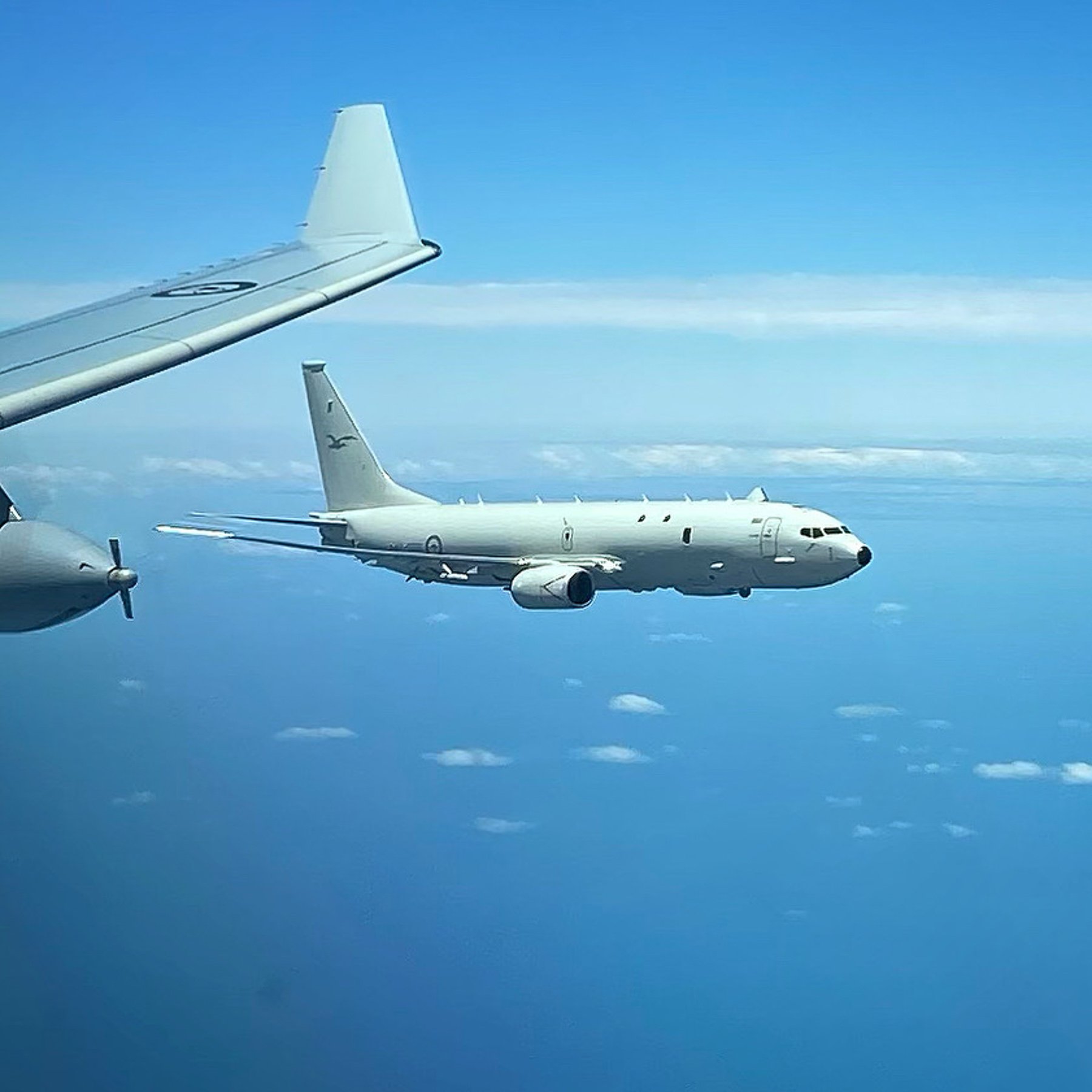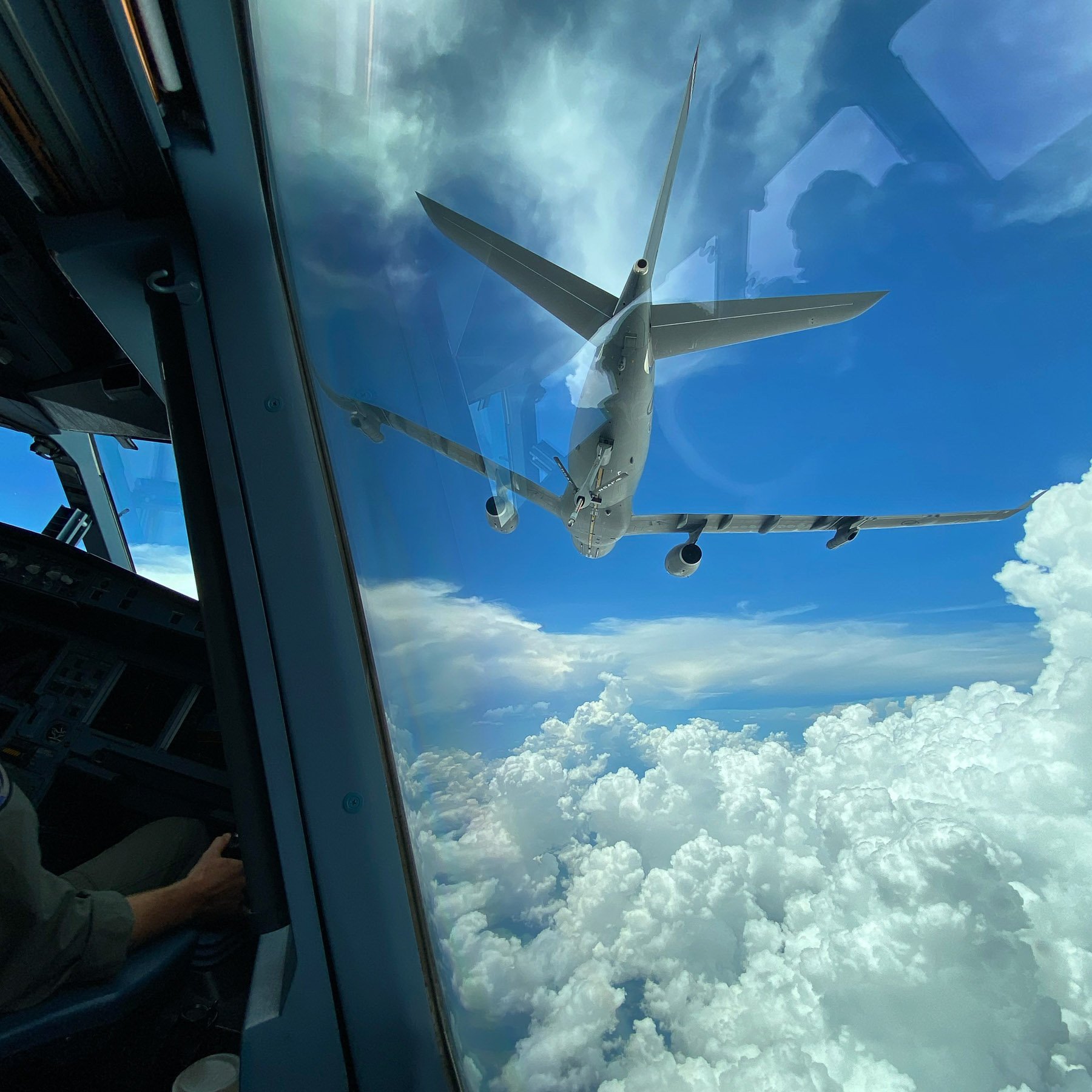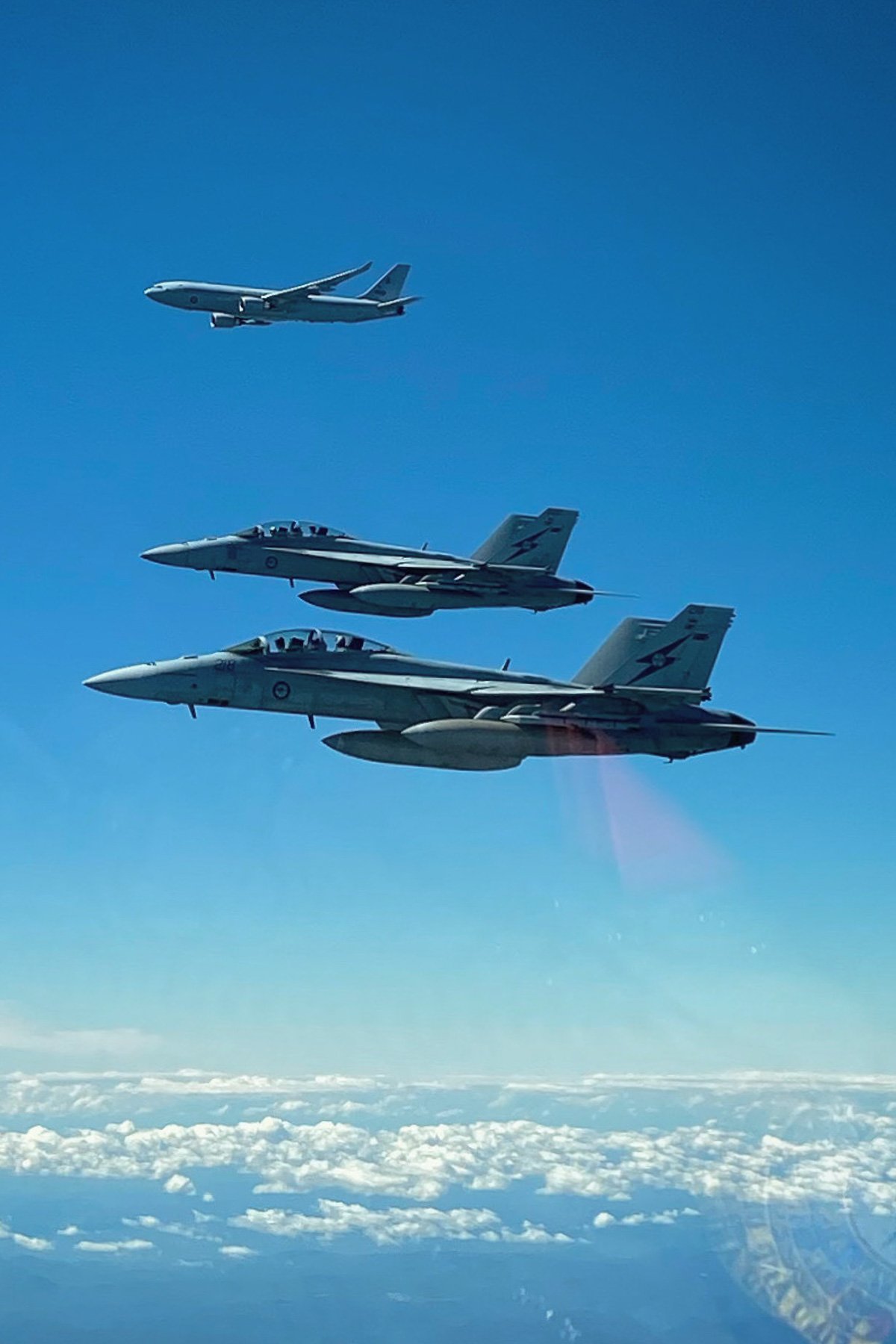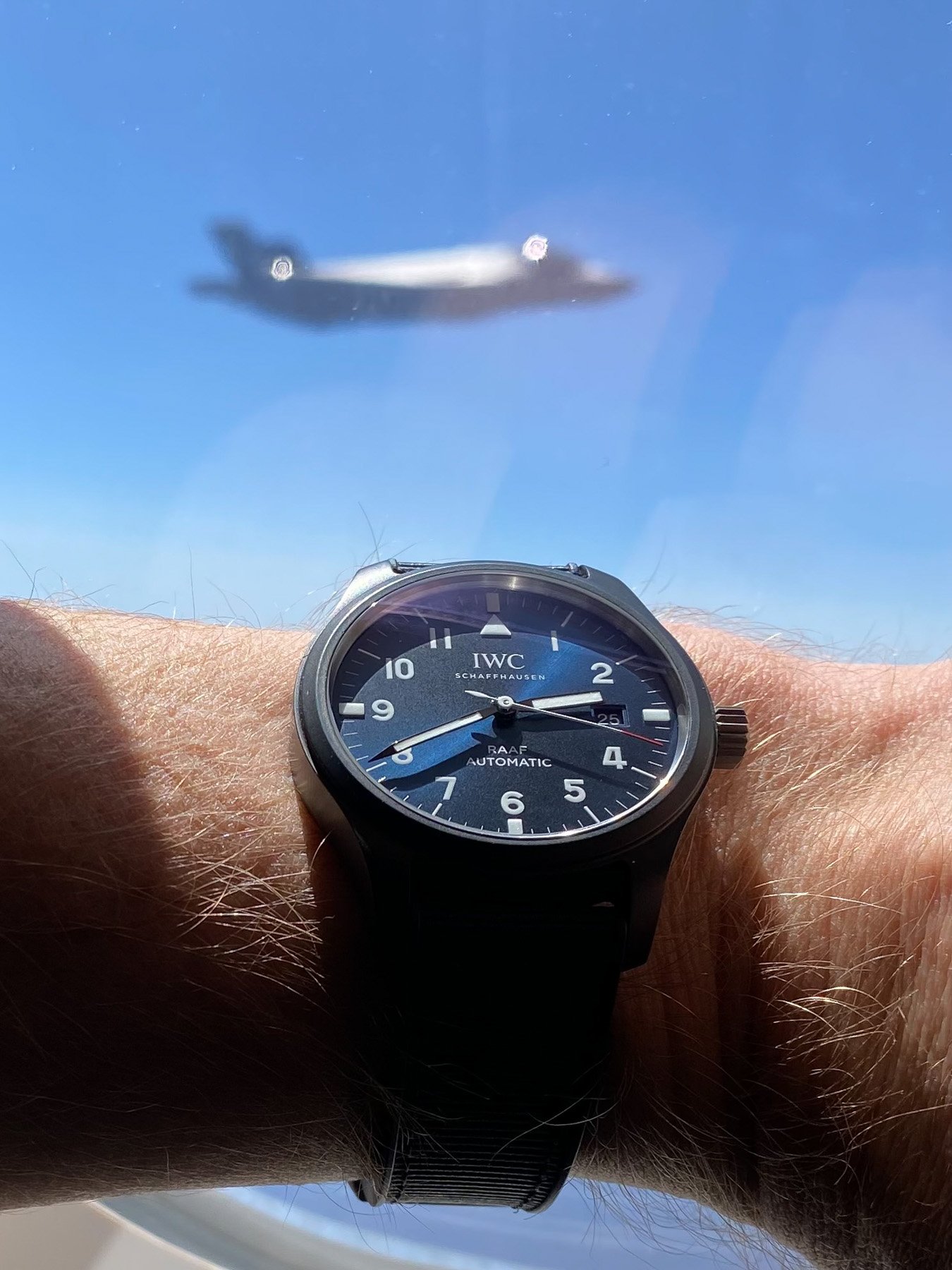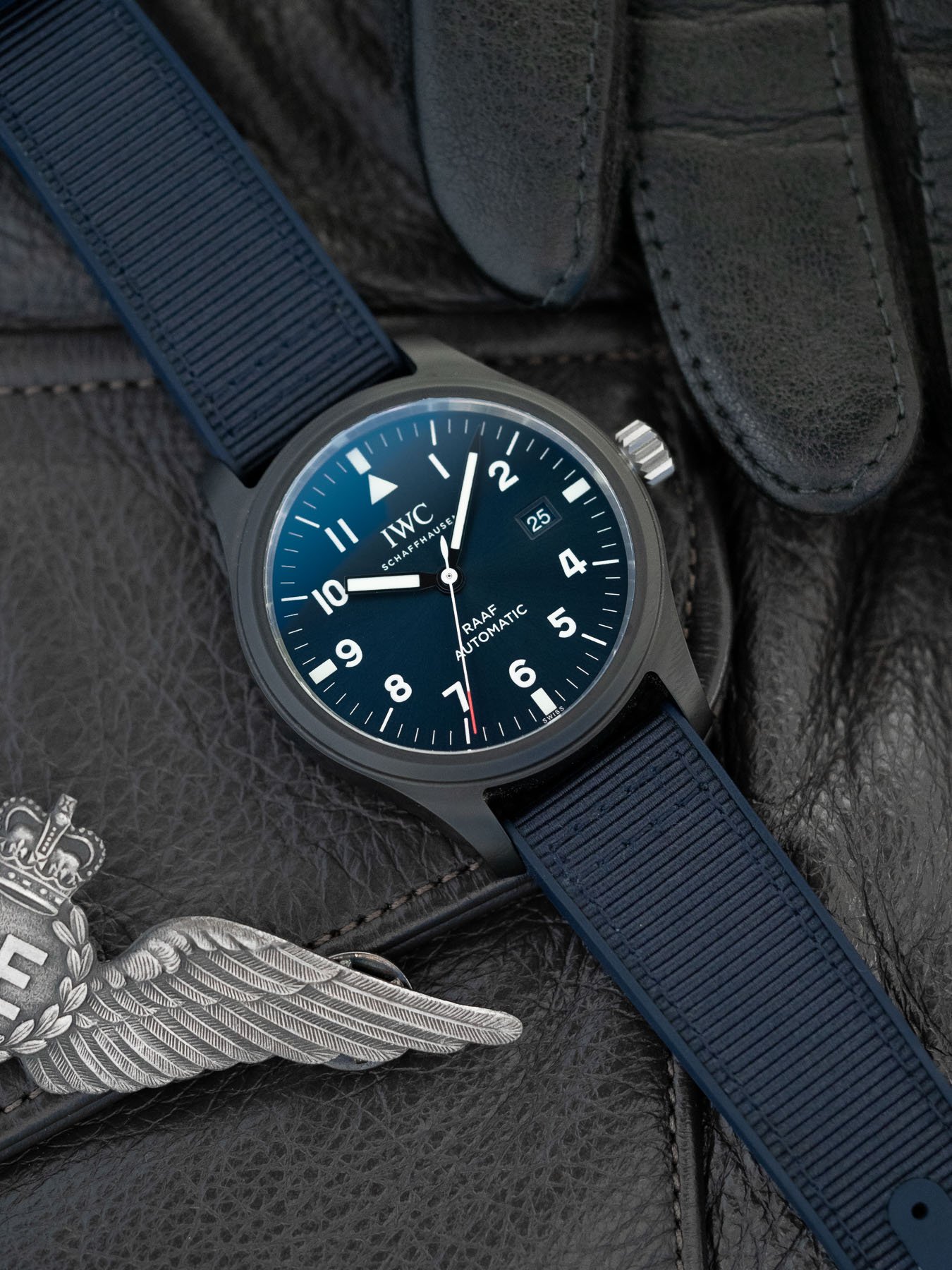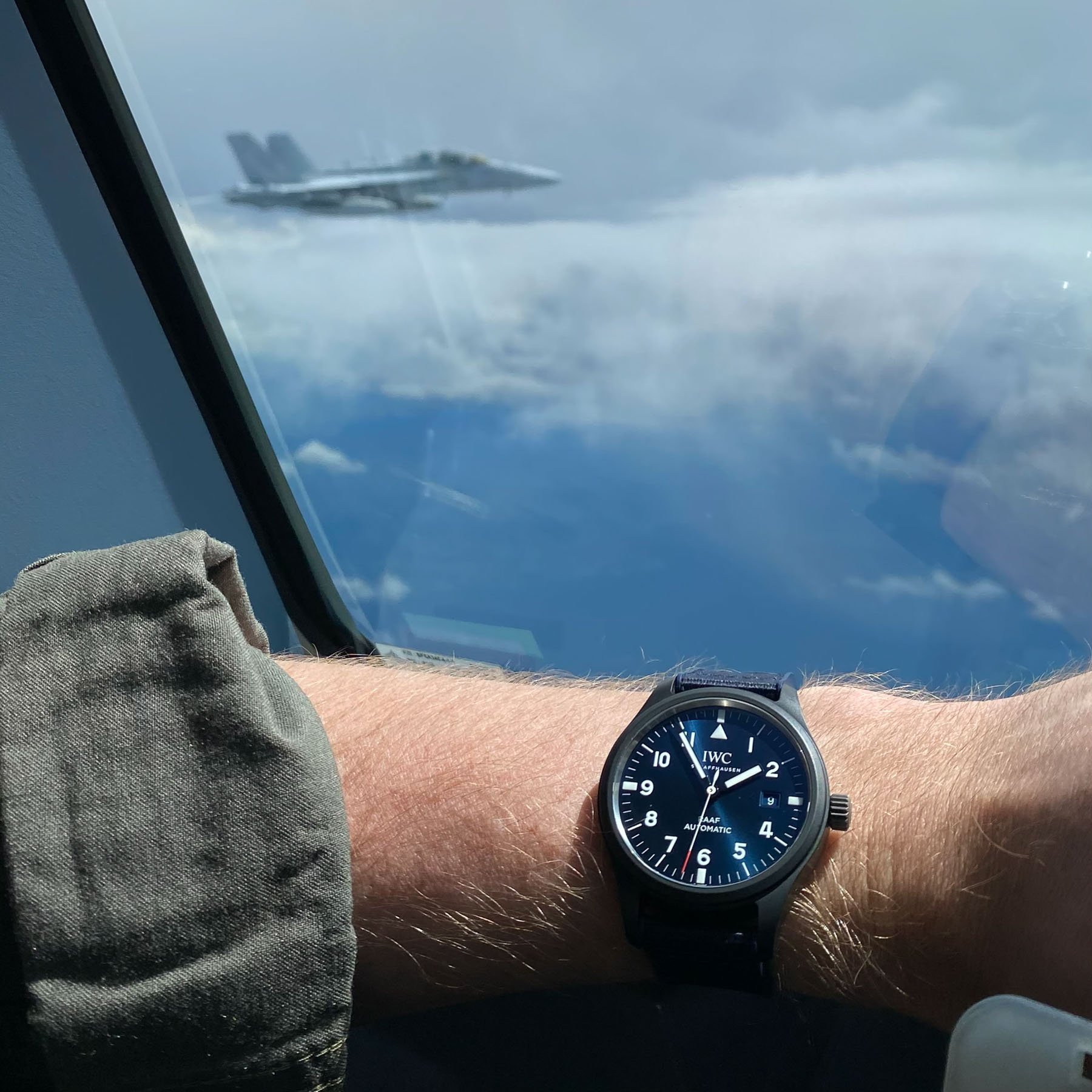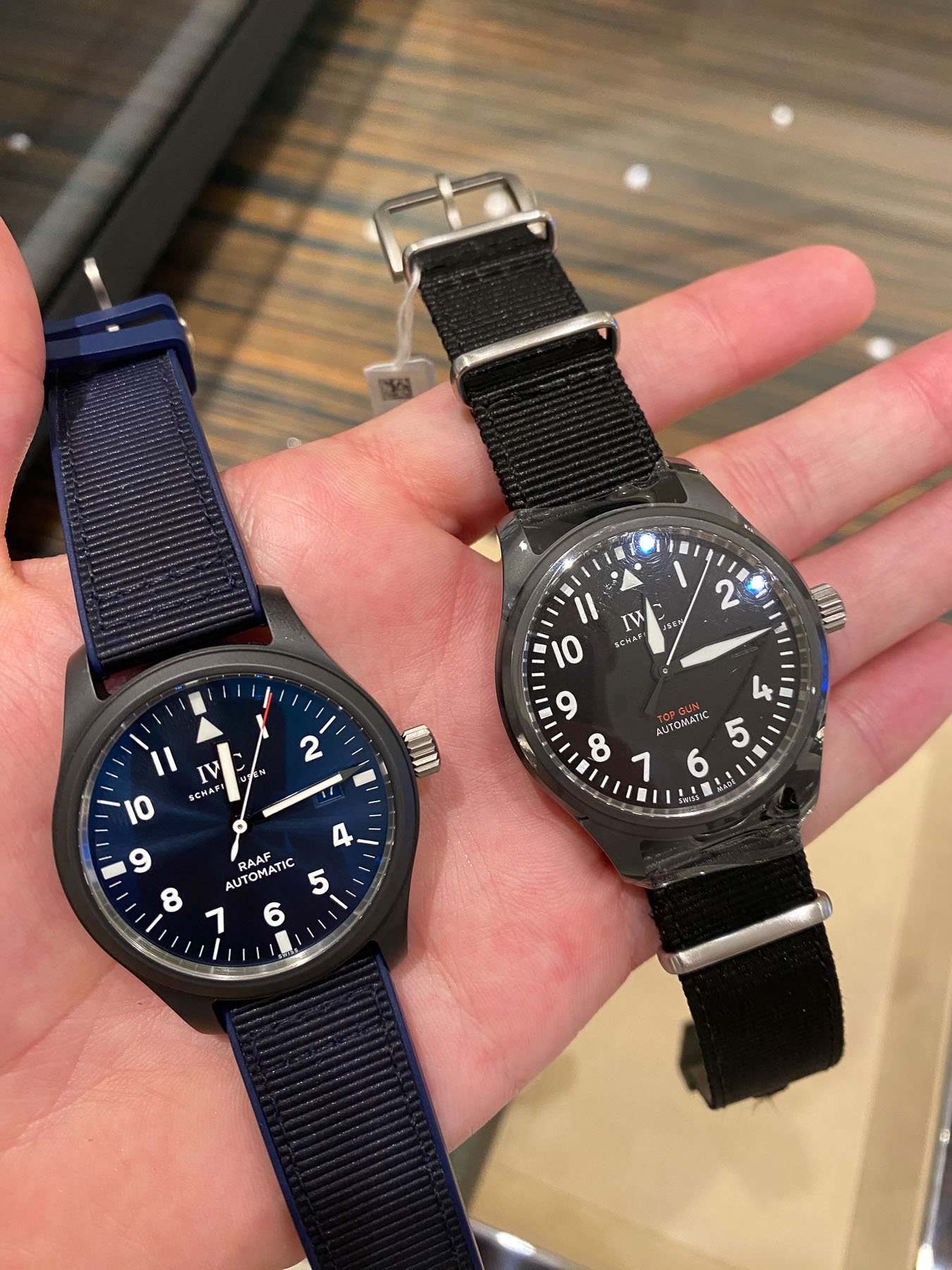The Story Behind A Special Royal Australian Air Force IWC Timepiece
This is the story of how a group of mates in the Royal Australian Air Force (RAAF) banded together to turn their horological dream — an homage to an original RAAF watch — into a reality. If you have an interest in special military timepieces, this one is for you.
It should come as no surprise that I have a particular fondness for International Watch Company Schaffhausen. The story of IWC is embedded in my family history, and I got to trace these steps in a visit to the IWC factory late last year. The connection doesn’t end there, though, as when I got my first significant job in journalism and embarked on an adventure far away from home, my father gifted me his very own Mark XV pilot’s watch. It’s one that I love to feature on my Instagram. But this is not a story about the Mark XV or even the recent Mark XX. No, this is a story about the Mark 11 and a new IWC watch that you cannot buy but that has been in production since 2022.
A little context: it starts with the Dirty Dozen
As my colleague Thomas covered in this excellent article, the design ethos of pilot’s watches like the IWC Mark 11 was born out of the “Dirty Dozen.” This was a group of highly legible military watches from 12 manufacturers, including IWC, for the United Kingdom’s Ministry of Defence. All of these watches had Arabic numerals and sub-seconds as well as general requirements about their performance so that their wearers could rely on them in difficult and dangerous contexts. I would recommend giving his article a read before this one for some useful context on these iconic designs.
The IWC Mark 11 debuted in 1948 and remained in production until the early 1980s when the Mark XII (the precursor to my Mark XV) replaced it. The IWC Mark 11 housed the IWC Caliber 89, a hand-wound workhorse that ticked at an 18,000vph frequency. This movement has a reputation for its overbuilt quality and sturdiness, and it is one of the great mechanical movements of the period (this highly informative feature goes into further detail on it). The 36mm Mark 11 itself is a beautiful example of a watch design dedicated to legibility. There’s even a buying guide on the IWC website for vintage Mark 11s.
A tale of enthusiasts
This is the story of how a passionate watch lover in the RAAF worked alongside the IWC office in Sydney to design a very special watch — and how his fellow RAAF members helped bring the project to fruition. It is a timepiece that pays homage to the pioneering air force pilots of the 1950s and 1960s and the watch they had been issued, the 36mm IWC RAAF Mark 11 (also known as the “Mk XI”). The RAAF celebrated its centenary in 2021, making it the second oldest air force in the Commonwealth after the Royal Air Force in the United Kingdom.
During the 1950s and early 1960s, the RAAF needed hardy pilot’s watches. As military-watch expert Greg Steer notes, the RAAF made three separate purchases of the Mark 11 navigator’s watch with the Store Reference Number G6B/346. The first two purchases, in 1950 and 1953, were from Jaeger-LeCoultre, and the last, in 1957, was from IWC, which is what inspired the special watch that we will look into today. My thanks to Nic Barnes, Tom Inslay, Josh Tamm, Al Soon, and Quentin from IWC in Sydney, who made this project possible. This is the story of the Pilot’s Watch Automatic Edition “RAAF” (ref. IW328102).
Pandemic brainchild
It was August 2020, and the COVID-19 pandemic was in full swing. It had temporarily grounded RAAF KC-30A pilot Nic Barnes, who was putting some of this extra spare time to good use, researching vintage IWC watches and looking through historical images of what RAAF personnel were wearing in the 1950s and 1960s. An idea began growing in his mind: “What if I could recreate an IWC watch that pays homage to the original issued Mark 11 of 1957?” He found the “Contact Us” page on IWC Australia’s website and sent an inquiry: “I said: ‘Hi, I’m with the RAAF, and I’m interested in making a watch.’ I had already caught wind that IWC was making custom watches for flying squadrons. It was for a US Navy Hornet Squadron, I think.”
Nic didn’t have to wait long to get a response from the Sydney boutique. The folks there were keen to work with him on a unique timepiece. “It started with a lot of to-ing and fro-ing with Photoshop images of a (at the time) Mark 18 with some RAAF logos slapped over the top, and we would go back and forth with the design team in Schaffhausen.”
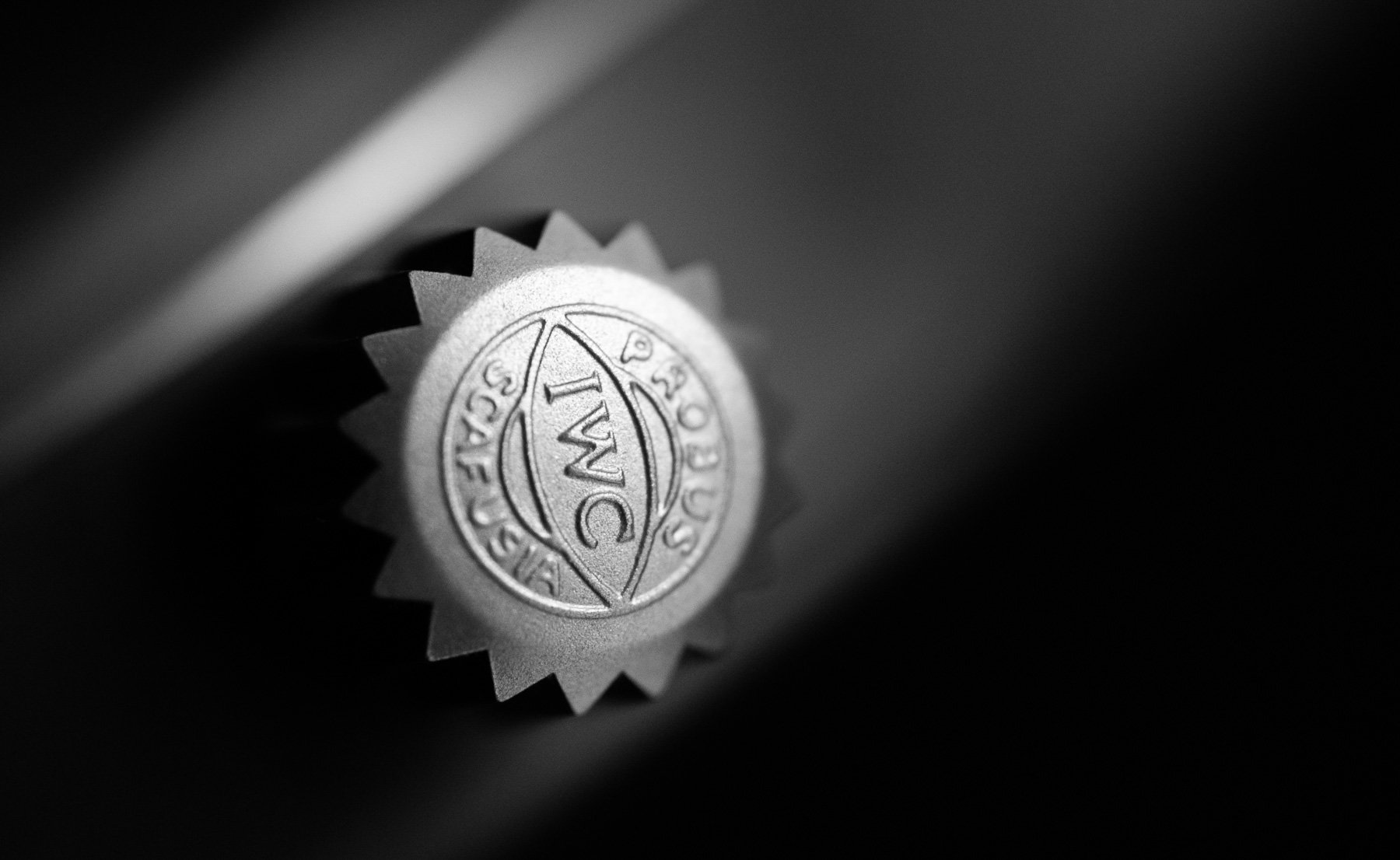
The design process begins
Before long, both the IWC Sydney team and Nic started delving deeper into the records. “It was when we started getting deeper that we realized there was this incredible historical connection between the RAAF and IWC. The watch brand was a supplier to the RAAF in the 1950s, which we thought was pretty cool and something that enthusiasts hadn’t explored properly. So we pivoted and, instead of doing a typical Mark 18 squadron watch, thought we’d do a tribute to the Mark XI that IWC made for the RAAF starting in 1957.”
Thus began a two-year process to develop a watch almost from the ground up, using research already conducted by Australian vintage-military-watch enthusiasts and historians but in a beefed-up 41mm case with modern specifications. Those specifications included a 10-bar water resistance rating, a ceramic case with a titanium crown, and the IWC (ValFleurier) 32111 caliber with a 120-hour power reserve. It would also need a soft iron inner case for protection against magnetism and an 11.4mm overall case thickness. The titanium case back would feature an RAAF kangaroo roundel and the callsign and/or name of the RAAF member who ordered the watch alongside the serial number and “Since 1921” (the RAAF’s founding year) as well as “10 bar” and “Intl. Watch Co.” next to the IWC fish logo.
An IWC design solidifies
Nic wanted the Pilot’s Watch Automatic Edition RAAF to use modern materials while also referencing past designs. The 41mm matte black zirconium ceramic case provided higher resistance to scratches, a useful feature for a watch used in a cramped cockpit. Nic also chose a blue dial, which provides a sunburst effect in the light that emanates from the dial’s center. The date indicator at 3 o’clock is a useful feature that was not on the original 36mm Mark 11, a time-only watch. But the hour markers are similar to those of the Mark 11, with a triangle at 12 o’clock that does not have a dot on either side (unlike the Mark XX, for example, which does). The curved sapphire glass, like that of all modern IWC Mark pilot’s watches, is designed to withstand sudden decompression.
Historical riffs
These design choices took a lot of work behind the scenes. Working with the IWC’s Sydney team, Nic said that they considered everything from the correct font used in the original 1957 model to the specialized colorway of the watch. “We had the blue dial, the red tip on the seconds hand, and white numbers on the dial because those colors represented the RAAF roundel. Even the font of the numerals was historically accurate. For example, we found that the numeral ‘7’ in issued Mark 11s of the period had no ‘hook,’ and there were no broad arrows on the dials, so we replicated that in our design.”
Finally, after almost two years of back-and-forth, IWC sent a prototype that Nic could handle and show his fellow RAAF colleagues so that they could order a watch if they liked it. The first moment that he could share this project of love and toil had arrived. It was at this moment that if there wasn’t enough interest in the timepiece, the project could be stillborn.
A strong community response
Word got out quickly in the RAAF community, and watch enthusiasts from all areas of the service began inquiring about this special new watch. Nic found that there was a vibrant and thriving watch-enthusiast/watch-curious community in the RAAF. “We got our first order of 19 watches, and the second order was even bigger than that — 26 watches, I think,” Nic said.
Fratello spoke with several watch enthusiasts within the RAAF who had gotten the watch — C-27J Spartan Pilot Josh Tamm, P-8A Poseidon Electronic Warfare Operator Tom Inslay, and Al Soon, a military dentist in the RAAF — to get a sense of what this timepiece meant to them.
Melding two interests
For Josh, it was an opportunity to meld his two greatest passions — the RAAF and watches. “As far back as I can remember,” he says, “I have always loved the idea of flight. The military pathway came from my family history, with many having served in the military at some point.”
“My mother’s brothers both joined the Royal Australian Air Force, one as a pilot. Growing up, I always found what he did fascinating, and I knew from a very young age that being a military pilot was the path I wanted to go down as well.”
A family connection to the original Mark 11
Nic didn’t know it, but Josh could trace his connection to the modern RAAF IWC watch back to the original Mark 11 — one had been issued to a family member who had served decades before. Josh tells us, “My appreciation for watches also started at a very young age. I always marveled at how nothing more than a bunch of bridges, gears, springs, bearings, and rubies could come together to tell something as complex as time. I also marveled how these mechanical movements and complications like the chronograph, perpetual calendar, or tourbillon were crafted with such precision well before the age of computers.”
Josh’s uncle had once been issued the original RAAF Mark 11, making the moment that he got his modern IWC an emotional one. “Knowing the history of the Mark 11 issue watches and knowing my uncle was once issued one when he became an Air Force pilot, I knew I had to own it. This watch is important to me because it brings together two of my favorite passions — flight and mechanical watches. The link to my family roots in military aviation also makes this piece just a little bit more special.”
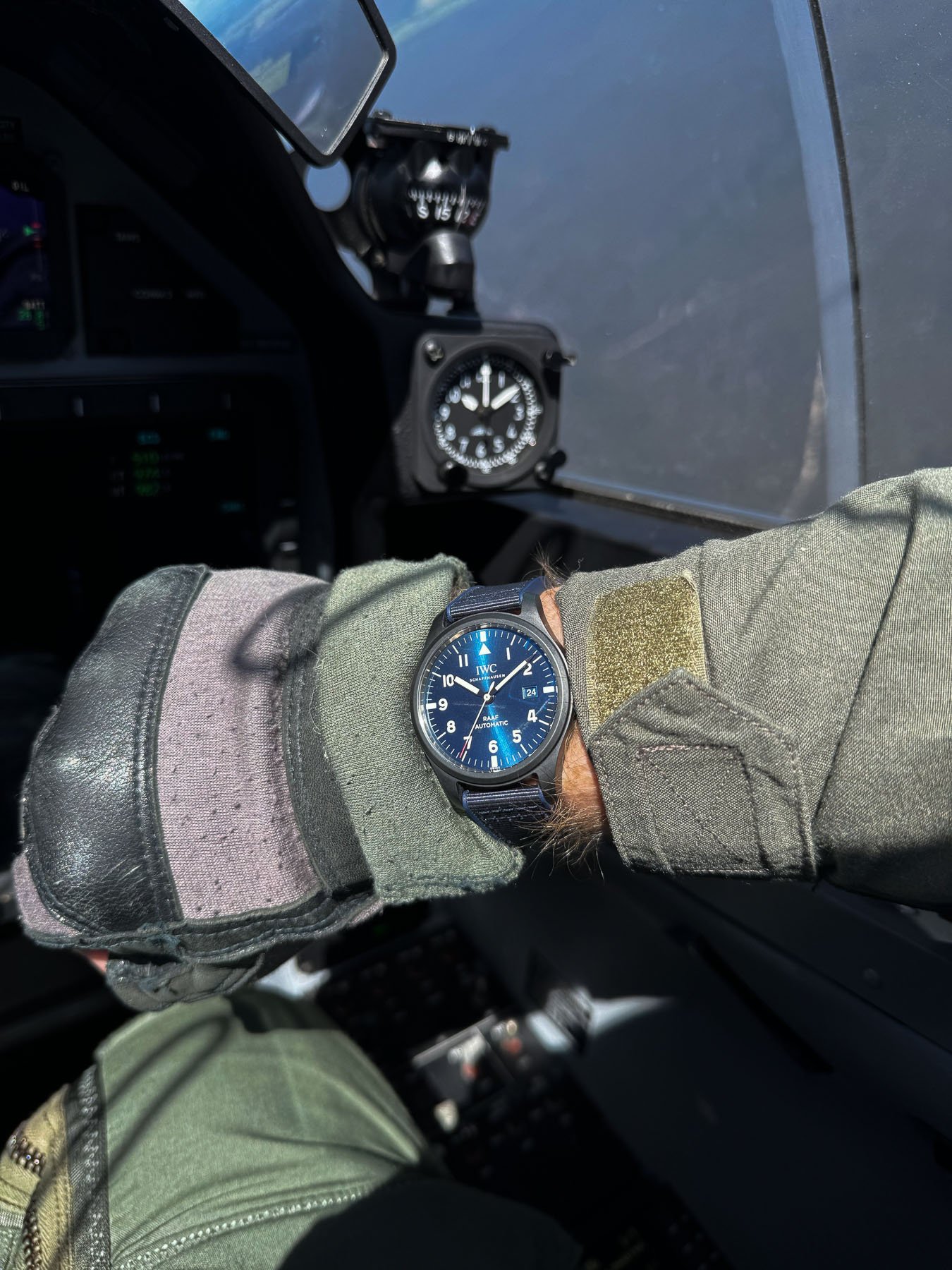
An appreciation for industrial design
Word of mouth that such a special timepiece was available to RAAF personnel quickly spread. Tom Inslay, a photographer by night and electronic warfare operator by day, also acquired one (each of these RAAF colleagues is based in a different state, meaning that word of mouth was usually the way they heard about the project).
In his previous life, Tom had been a metal machinist and said he always admired the watch industry as the “epitome of machining in terms of engineering, tolerance standards, and surface finishing. That is where my love for horology began, and the journey has led me to owning and admiring many wonderful timepieces but, more importantly, to meet some wonderful, like-minded people.” This focus helped inform his approach to macro photography, appreciating the minute details of watches.
Connecting enthusiasts
Tom has a love of tool watches. “Even before this watch, I had owned other IWC Fliegers and always considered them to be the benchmark of military aviation watches, so it’s not every day that you get the opportunity to own a hard-to-access timepiece, with your name on the back, from a company you already hold in high esteem. The watch holds incredible sentimental value to me.”
Al Soon, a regular at RedBar Melbourne, said he gravitated towards watches through his active lifestyle. “When I started high-altitude climbing, that led to my interest in watches — in particular, watches and adventurers. When I started serving in the RAAF, my watch passion grew, and now it is part of my life, with many different watches and not much money.”
From one regretful sale to a new, rare timepiece
For Al, this will be a watch that reflects how the hobby has granted access to new friendships and a broader community.
“The IWC watch means a lot, especially with its historical connection with the Ministry of Defence, the RAAF, and the classic IWC Mark 11. I had an IWC Mark XVIII and, regretfully, sold it. So when this offer came up, it was a quick decision and a no-brainer to get one. It is special.”
A runaway success within the Royal Australian Air Force
Tom, Josh, and Al were some of the first RAAF personnel to order the watch. Since then, the reaction has been incredibly positive within the various units. Nic said that RAAF personnel have already ordered more than 80 of these watches since the first batch in late 2022, which is a significant feat.
Nic also said that the process led to the creation of something that he intends to pass down to his children with pride. “This was the culmination of a lot of hard work, and to be able to have something tangible to embody that and last a long time felt great. This one not only represents the work we had done, but it’s also a tribute to the past aviators. The 1950s and 1960s were a very different time, and people even in those days took huge risks to build the foundations of what we have today. I’ll pass this watch down to my kids. It’s engraved with my name, and mine and the others will become family heirlooms.”
Final thoughts
One of the most heartwarming aspects of this story is how each individual’s connection with this watch helped create and solidify a thriving community of watch enthusiasts within the RAAF, forging new friendships in the process. Isn’t that what this hobby is all about? There are certainly other examples of squadron watches, but this particular iteration had special importance all across the RAAF, no matter what state or unit someone belonged to.
This is also a special watch for me, even if I don’t own one, because I share the sentiment that these enthusiasts have. Just as my father passed down my Mark XV, so too will these members of the RAAF have something special to hand down to their relatives one day.
But what do you think of this IWC timepiece, Fratelli? Are there any other special editions out there that you find interesting? And would you own one if you could? I know what my answer is!

